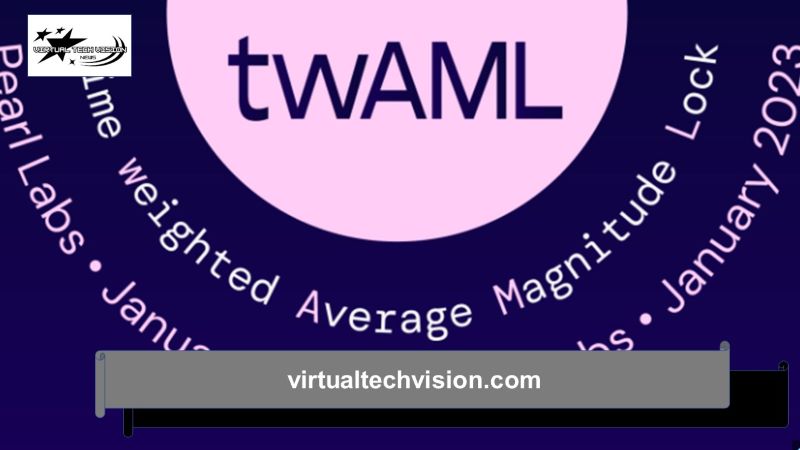In the rapidly evolving digital landscape, understanding How Twaml Works is crucial for enhancing user experience. Twaml harnesses cutting-edge technology to create seamless interactions between users and platforms, revolutionizing how we engage with digital content. In this exploration, we will delve into the mechanics behind Twaml and its transformative impact on user experience.
Contents
The development and growth of Twaml

The history of Twaml’s formation and development is a fascinating journey that showcases its evolution into a vital tool for enhancing user experience. To understand how Twaml works, one must first consider its origins, which began with the aim of bridging the gap between technology and everyday users. The founders recognized a growing need for an intuitive platform that could simplify complex processes, leading to the inception of Twaml.
As Twaml developed, its focus on user-centric design became a core principle. This commitment not only guided the initial framework but also influenced subsequent updates and features. Each iteration aimed to refine how Twaml works, enhancing its functionality and responsiveness to user feedback. This emphasis on continuous improvement has been pivotal in adapting to the changing needs of users in a fast-paced digital environment.
Moreover, Twaml’s growth has been supported by partnerships and collaborations with various tech companies, which has enriched its capabilities. These strategic alliances have played a crucial role in demonstrating how Twaml works within different contexts and industries, showcasing its versatility.
Today, Twaml stands as a testament to its founders’ vision and the importance of user experience in technology, illustrating that understanding how Twaml works can empower users and improve their interactions with digital platforms.
How Twaml Works?

Understanding how Twaml works is essential for grasping its impact on the digital landscape. At its core, Twaml operates as an intermediary between users and the complex technological frameworks that often complicate the user experience. By leveraging advanced artificial intelligence and machine learning, Twaml streamlines processes, ensuring that users can access and utilize technology efficiently.
One of the fundamental aspects of how Twaml works involves its ability to analyze user behavior and preferences. By collecting data on how users interact with the platform, Twaml customizes its features and interface to cater to individual needs. This not only enhances usability but also fosters a sense of ownership among users, as they can tailor their experience according to their preferences.
Moreover, Twaml employs a sophisticated algorithm that identifies potential challenges users might face when navigating technology. By proactively addressing these issues, Twaml exemplifies how Twaml works to minimize frustrations and maximize engagement. This proactive approach not only empowers users but also encourages them to explore new features and functionalities without fear of overwhelming complexity.
Understanding how Twaml works is crucial for anyone looking to optimize their interaction with technology. By simplifying processes and personalizing experiences, Twaml redefines what it means to connect users with technology, ultimately making the digital world more accessible and enjoyable.
Practical applications of Twaml

The practical applications of Twaml demonstrate its versatility and effectiveness across various sectors, highlighting its potential to transform user experience. Understanding how Twaml works is essential to appreciate its impact in real-world scenarios. One of the primary applications of Twaml is in customer support, where it streamlines communication between users and support teams. By providing instant answers and solutions, Twaml significantly enhances response times and customer satisfaction, showcasing its capability to improve service delivery.
Another critical application of Twaml lies in data analysis and visualization. Businesses can leverage Twaml to process large sets of data and present them in a user-friendly manner. This functionality allows organizations to make informed decisions based on real-time data insights. Grasping how Twaml works in data processing is crucial for companies aiming to optimize their operations and stay competitive in a data-driven marketplace.
Additionally, Twaml can be integrated into educational platforms, enhancing the learning experience for students and teachers alike. By facilitating interactive learning modules, Twaml allows educators to engage with students more effectively, thereby enriching the educational environment. Understanding how Twaml works in educational settings can lead to the development of more effective teaching strategies and better student outcomes.
The practical applications of Twaml span various fields, from customer support to data analysis and education. By exploring how Twaml works, users can unlock its full potential and leverage its capabilities to enhance their experiences and outcomes across multiple domains.
The future of Twaml

The future of Twaml promises significant advancements in user interaction and technology integration, paving the way for an enhanced digital experience. To understand this potential, it’s essential to explore how Twaml works in creating seamless connections between users and the technology they utilize. As the demand for more intuitive and responsive systems grows, Twaml is positioned to evolve by leveraging artificial intelligence and machine learning capabilities. These technologies will enable Twaml to provide even more personalized user experiences, adapting to individual preferences and behaviors.
One of the key aspects of Twaml’s future lies in its ability to integrate with emerging technologies. By understanding how Twaml works within the context of the Internet of Things (IoT), for example, we can envision a landscape where users interact with various smart devices through a unified platform. This integration will not only streamline processes but also enhance the overall user experience, as Twaml will facilitate easier communication between devices and users.
Moreover, as remote work and digital communication become increasingly prevalent, Twaml’s role in enhancing collaboration will be vital. By recognizing how Twaml works to facilitate real-time communication and project management, organizations can optimize their workflows and improve team dynamics. The platform’s potential to transform traditional work environments into more agile and efficient spaces is immense.
The future of Twaml is closely tied to its ability to adapt and innovate in the realms of user interaction and technology. By continually evolving to meet user needs and exploring how Twaml works in new contexts, it will remain at the forefront of enhancing user experiences in an increasingly digital world.
Grasping how Twaml works is essential for recognizing its significant influence on user experience. By integrating advanced technologies, Twaml transforms user interactions with systems, making it a game changer in the digital landscape. For more insights into this innovative platform, visit VirtualTechVision.










